Working on a remodel at home can always mean picking new floors, one of the most basic elements that help define a house by appearance and functionality. Here is a guide that will help you pick between the characteristics, the pros, and the cons of the different types of flooring so that you can make the right choice for your project.
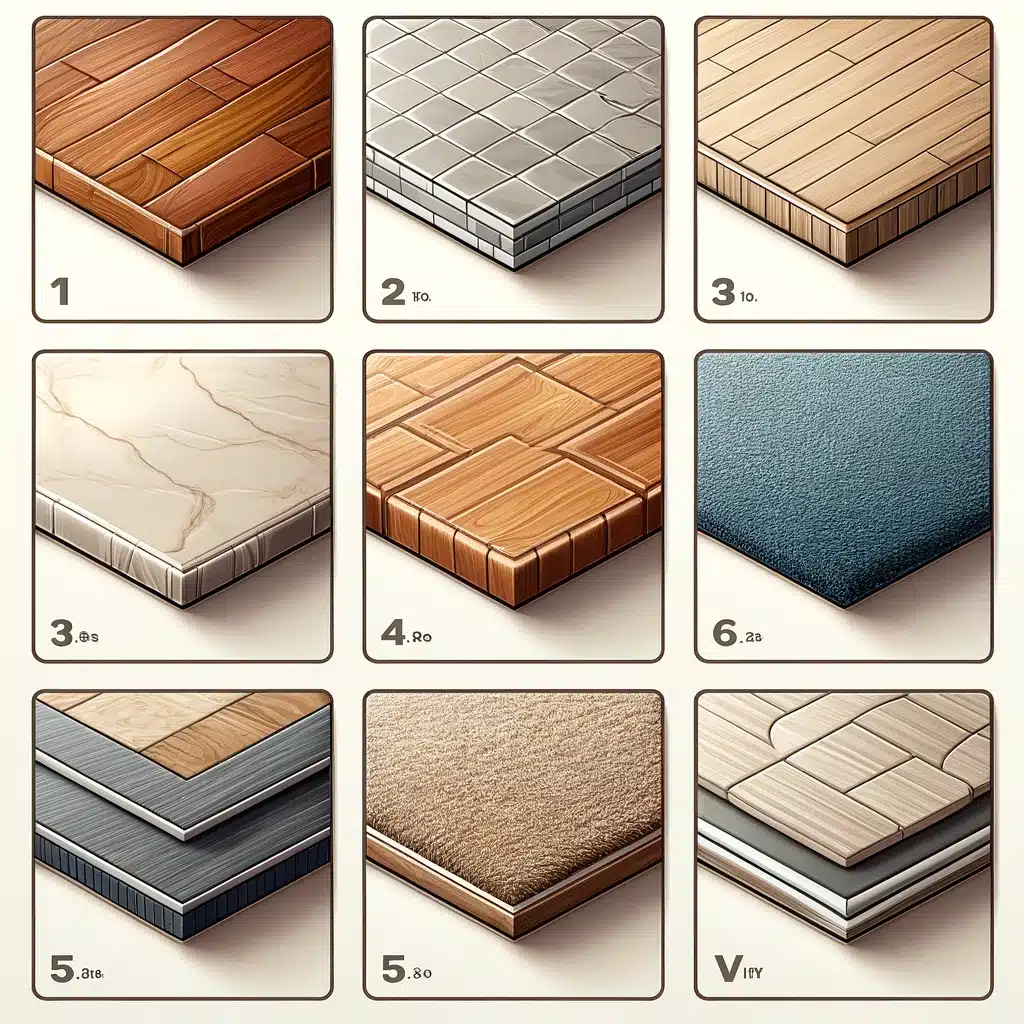
Hardwood Flooring
Hardwood floors have long been praised for their sturdiness, tenacity, and attractiveness. The installation of either new solid wood flooring or the retention of an existing one does great justice toward increasing the value of a home. When cleaned regularly, a hardwood floor can last many years, and any repairs needed are executed. The differing types of wood floor species include, but are not limited to, oak (red and white), cherry, walnut, hickory, ash, pine, birch, maple, and bamboo. Solid wood planks, typically ¾ inch thick, are durable and capable of withstanding multiple refinishes, making them a sustainable option when responsibly sourced.
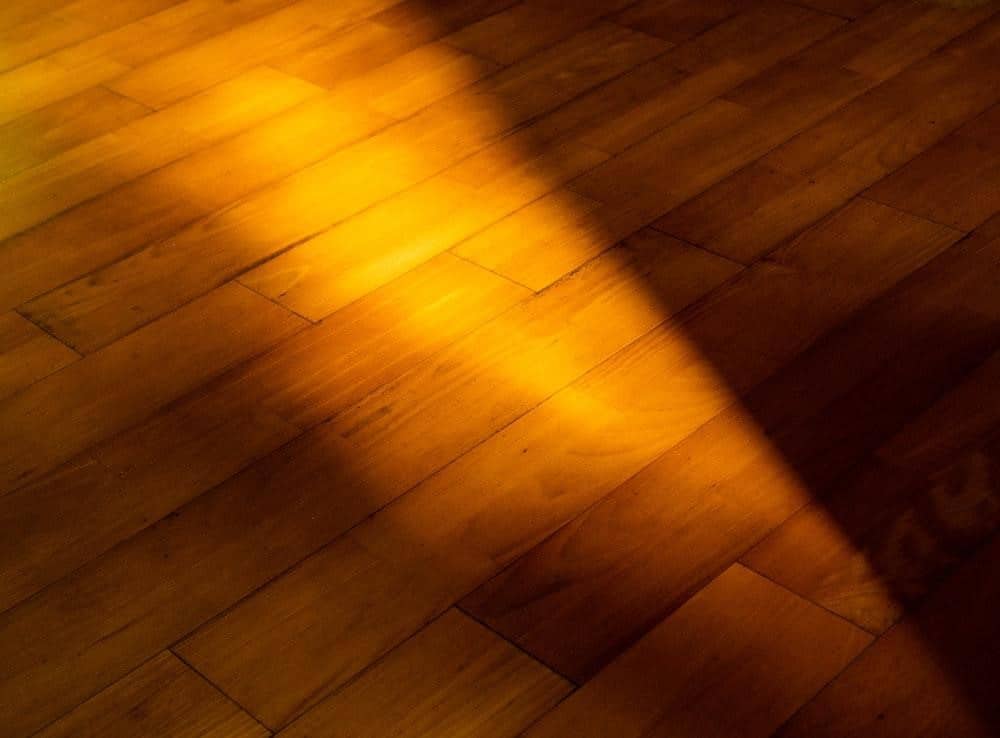
It’s a favorite among designers and architects: classic wood flooring. “Wood is our flooring of choice because it’s warm, beautiful, versatile, and practical. We often choose carpeting for upper levels to provide a softer feel in more private areas and to help with sound absorption,” says Mann.
Nevertheless, for all its pros, hardwood flooring also has some cons. It scratches and dents easily, so it is a good idea to avoid heavy wear and tear, especially if you have kids or pets. It is susceptible to water damage and would not work best in very damp areas, like kitchens and bathrooms, where other flooring materials more moisture-resistant would be preferable.
Last, the finish on hardwood floors can have a big impact on how they look. Some hardwood floors can be refinished as many as five times, says Martinez. “If you are going to make a change,” she says, “you can change the sheen to enhance a room’s new decor.”
Pros:
- Aesthetic Value: Provides classic looks that can significantly multiply the value of homes.
- Durability: Hardwood, if well maintained, will last for many years.
- Refinishable: It can be sanded and refinished multiple times, the same as new.
Cons:
- Cost: It ranks among the most expensive floorings.
- Maintenance: It may require refinishing and regular cleaning.
- Moisture Sensitivity: It is warping in humid areas.
Engineered Wood Flooring
If the hardwood floors look like they are up your alley, but you feel the cost of installation, maintenance, and repair will be too high, you may consider engineered wood flooring. As far as cost goes, it falls right between laminate and real hardwood flooring.

It consists of a wear layer of hardwood veneer attached to a plywood or fiberboard base, with wear layers typically in the 3-4 mm range for normal in-home use to 6 mm for higher traffic. Engineered wood is designed to provide the aesthetics of hardwood at a more inexpensive cost and can be used in areas with radiant heating systems because of its natural stability with changes in temperature and humidity. Installation is easy, and in most cases, it features interlocking designs. Hence, it is easy to install without professional help. More importantly, brands such as Home Depot’s Lifeproof are incredibly durable and waterproof, thus ideal in places that have moisture problems. Engineered wood looks more like genuine wood compared to laminates. The wood surface is treated for scratch and stain resistance, giving a beautiful long-lasting, resilient flooring. A varied selection of engineered wood floors in types such as oak, pine, and birch can be customized to match home decor.
Pros:
– Stability: More resistant to moisture and temperature changes than both solid wood and hardwood.
– Affordability: Less expensive than traditional hardwood.
– Versatile Installation: It can be installed over various subfloors of engineered flooring, including some concrete floors.
Cons:
– Limited Refinishing: Only the top layer luxury vinyl flooring can be refinished, and only a few times per square foot.
– VOC Emissions: Some products may emit volatile organic compounds.
Laminate Flooring
Laminate floors offer a cost-effective and versatile flooring solution, mimicking the look of hardwood and stone with less maintenance and cost. It’s cheap, hardy, and easy to put in with its click-lock system, presenting a very attractive substitute for natural wood or even stone floors. At a glance, it looks very authentic because of the photographic print layer and is covered by a transparent, scratch-resistant coating. While laminate floors are only water-resistant and unsuitable for high moisture areas like the bathroom, they are overly sensitive to moisture associated with warping, but then it is very easy to set up, hence good for the DIYer.
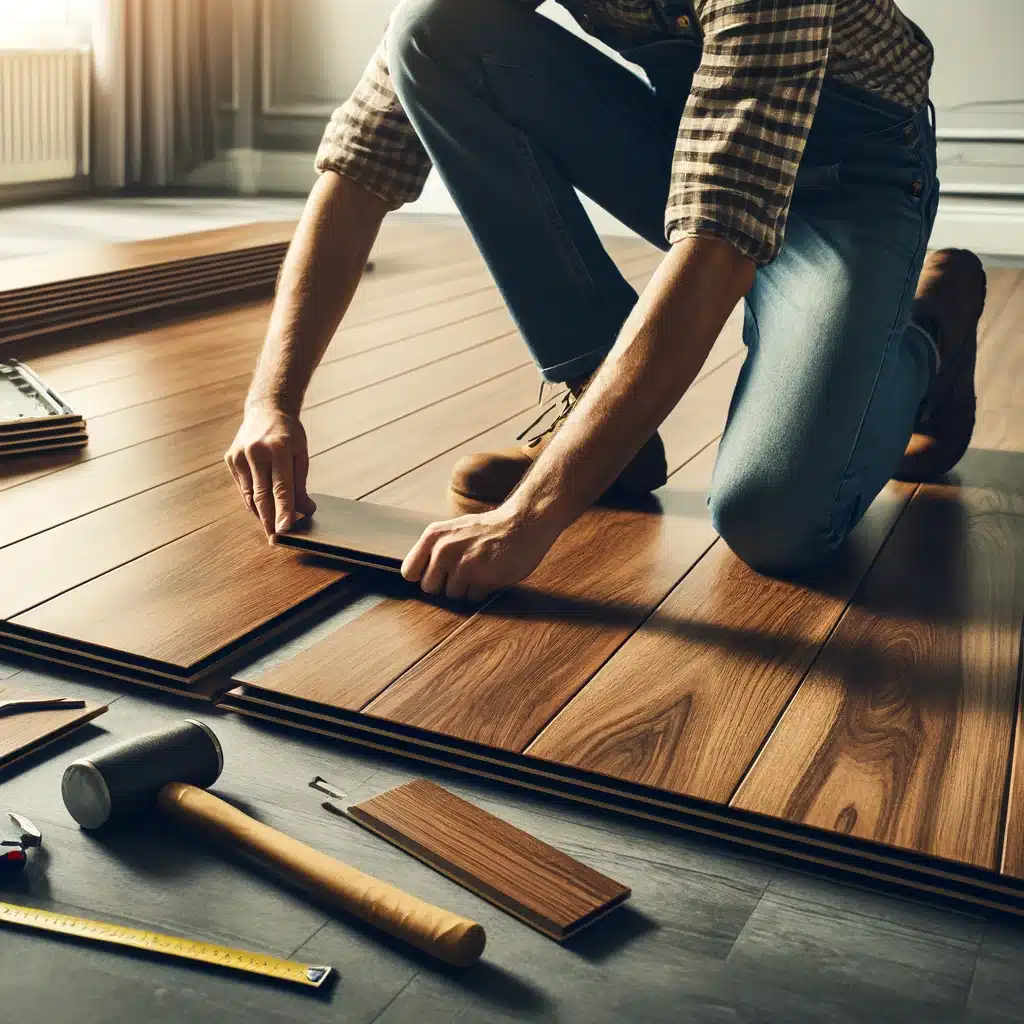
Laminate floors are an inexpensive type of floor, costing approximately a third to half of what classic hardwood floors cost, and are relatively low-maintenance. With companies like Pergo and Home Decorators Collection by Home Depot offering waterproofing in their laminates, they are especially good in spaces where moisture will be a concern. It consists of multiple bonded layers, which could be from wood-like grains to stone and ceramic appearances, hence a wide range of choices in design to befit any home décor.
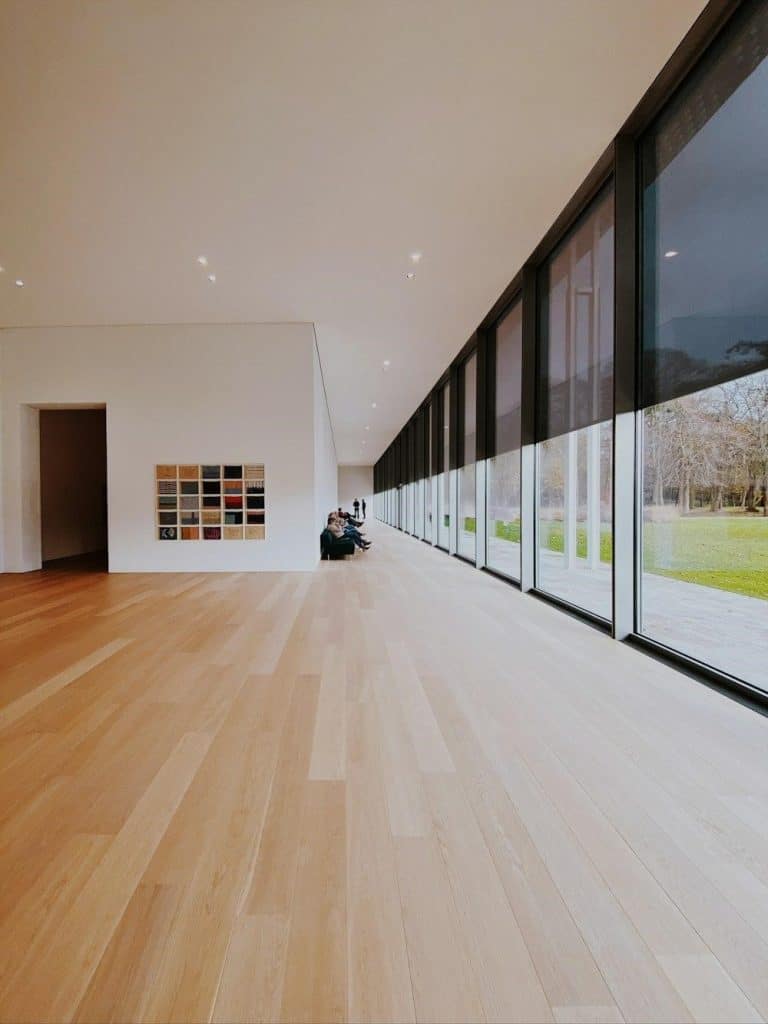
Pros:
- –Cost-Effective: Less expensive than wood or stone.
- Durability: Scratch-resistant and durable surface.
- Ease of Installation: DIY-friendly with interlocking pieces.
Cons:
- Moisture Damage: Susceptible to damage in wet areas unless specifically designed to be water-resistant.
- Authenticity: Does not feel or sound like real wood or stone.
Vinyl Flooring
If you need versatility and water resistance from your floor, check out vinyl. Much stronger than other materials, vinyl also offers many design choices: sheets, tiles, and planks. That includes luxury vinyl tiles (LVT) and luxury vinyl planks (LVP) in styles that look very much like natural wood and stone. Luxury vinyl tile (LVT) features a multi-layer construction, including a high-definition design layer and a durable top layer, offering a wide variety of styles and high durability. Vinyl tile is a favorite choice in moisture-prone places, such as the kitchen and bathroom, where it is extremely water-resistant.
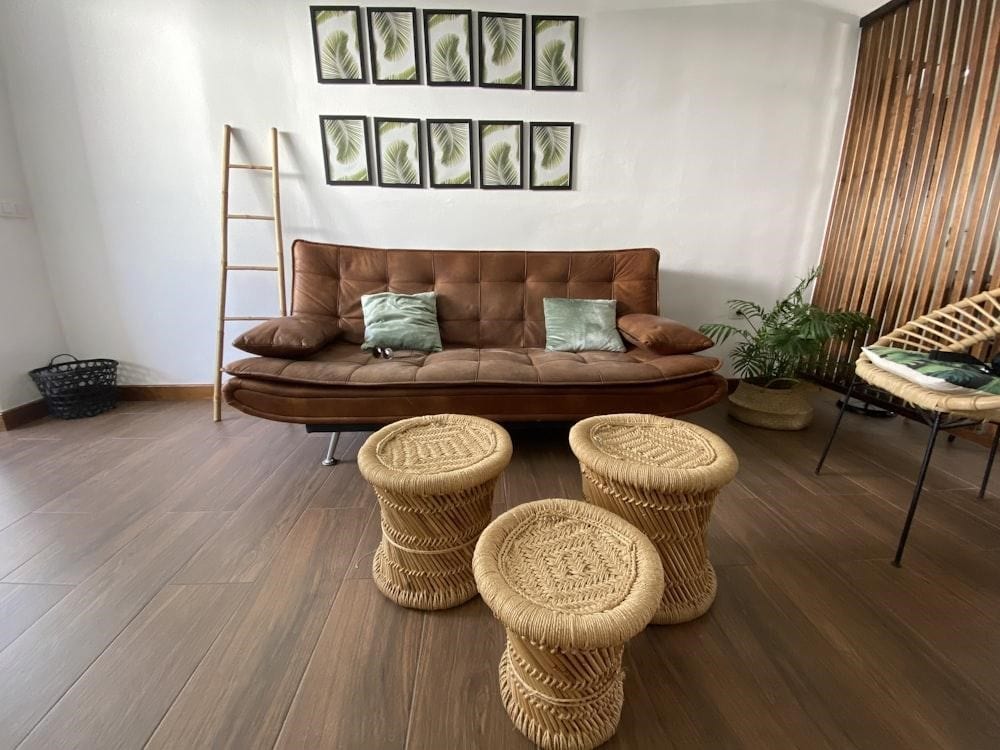
Apart from that, vinyl floors are affordable and easy to set up. One may choose to install them in either a peel-and-stick format or a click-lock format, making them accessible for most DIY projects. In addition, low-maintenance flooring is easy to clean and maintain, so it’s a practical solution for busy households.
Pros:
- Water Resistance: Excellent choice for kitchens and bathrooms.
- Variety of Designs: Available in styles that mimic more expensive materials.
- Easy Maintenance: Simple to clean and does not require special treatments.
Cons:
- Durability: This may not last as long as other flooring types.
- Environmental Impact: Made from synthetic materials, which are not biodegradable.
Ceramic and Porcelain Tile
They are very sturdy and water-resistant; hence can be applied to the floor of any moist-prone area within a house, such as a kitchen, bathroom, or laundry area. Both are made from a fired clay material, but porcelain tiles are made from a more refined clay and fired at a higher temperature, so they are denser and less porous to water than ceramic tiles.
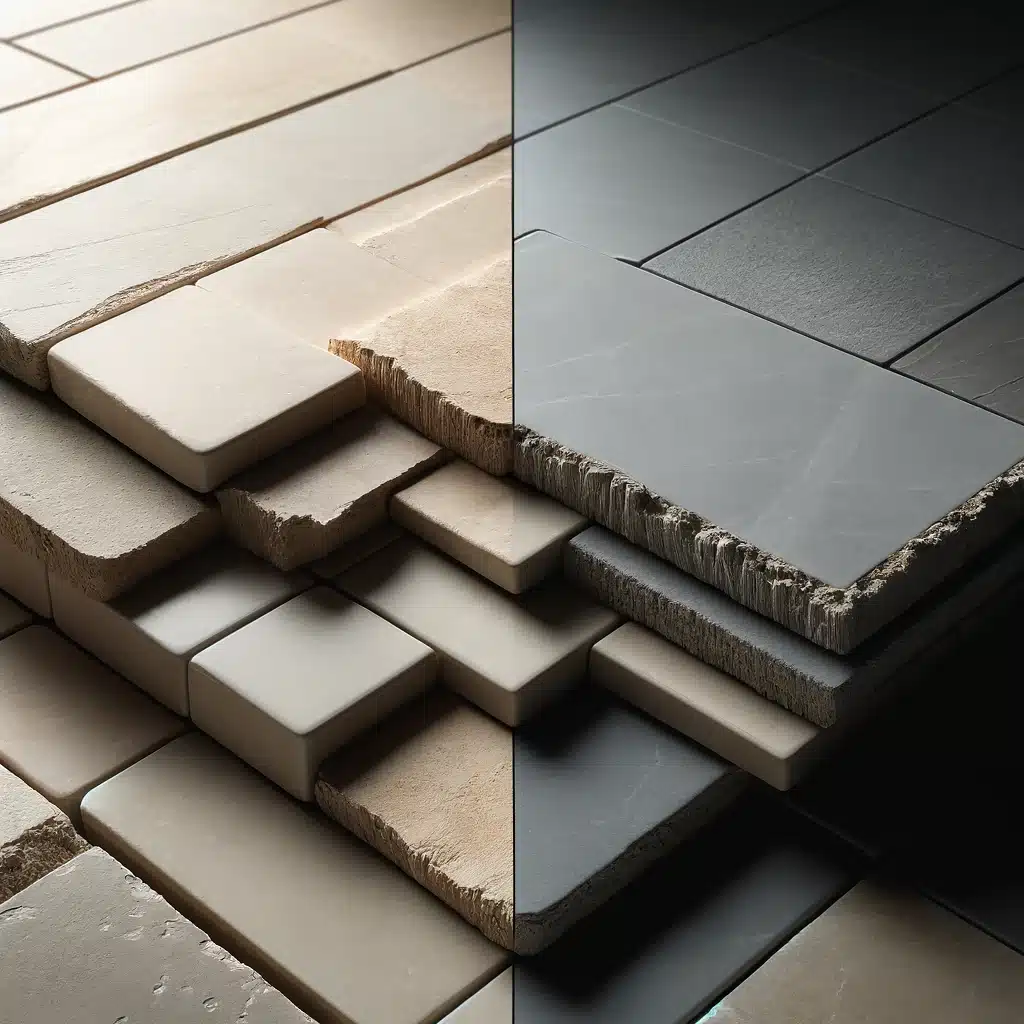
Ceramic Tile floors
Ceramic floor tiles come in a great variety of colors, patterns, and sizes. Moreover, they are less expensive than porcelain and are a bit easier to cut and install, which again means that it is a better option for projects done at home. There are options for the surface of ceramic tiles—glazed and unglazed. In the case of glazed ceramic tiles, they have an extra property of stain resistant and scratch resistance, which makes it very easy to maintain them.
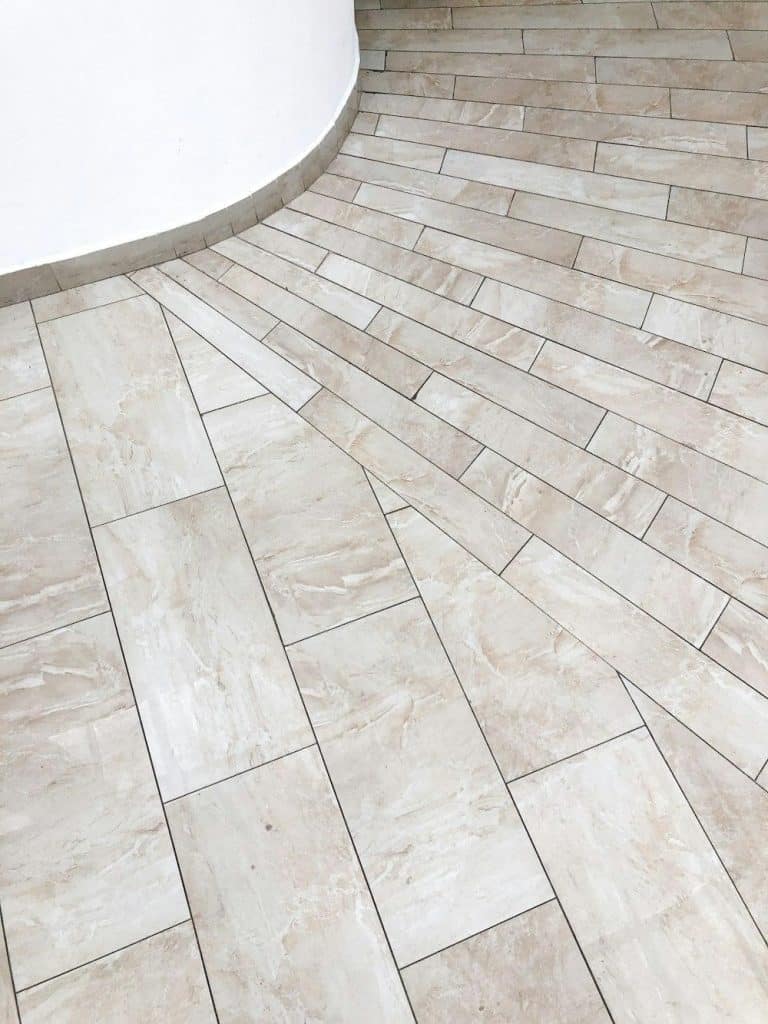
Porcelain tile floors
Porcelain tiles are reputable materials for strength and resistance to water, hence applicable for use in homes and outdoors. The materials are more efficient in the heavy and heavy foot traffic sections of the floor, and they are resistant to abrasion. Porcelain is less porous compared to ceramics; hence, it is more stain and water-resistant, but on the other hand, it is more costly. Both types of tiles are easy to maintain and only need occasional cleaning to remain like new. They are also hypoallergenic since they are unable to provide a habitat for dust mites or other allergens, and thus, they are at the top of the list for people who have allergies. However, both can feel cold and hard underfoot, and the laying process may be quite tricky and time-consuming; in most cases, an expert touch would be required to get them to fit perfectly and align.
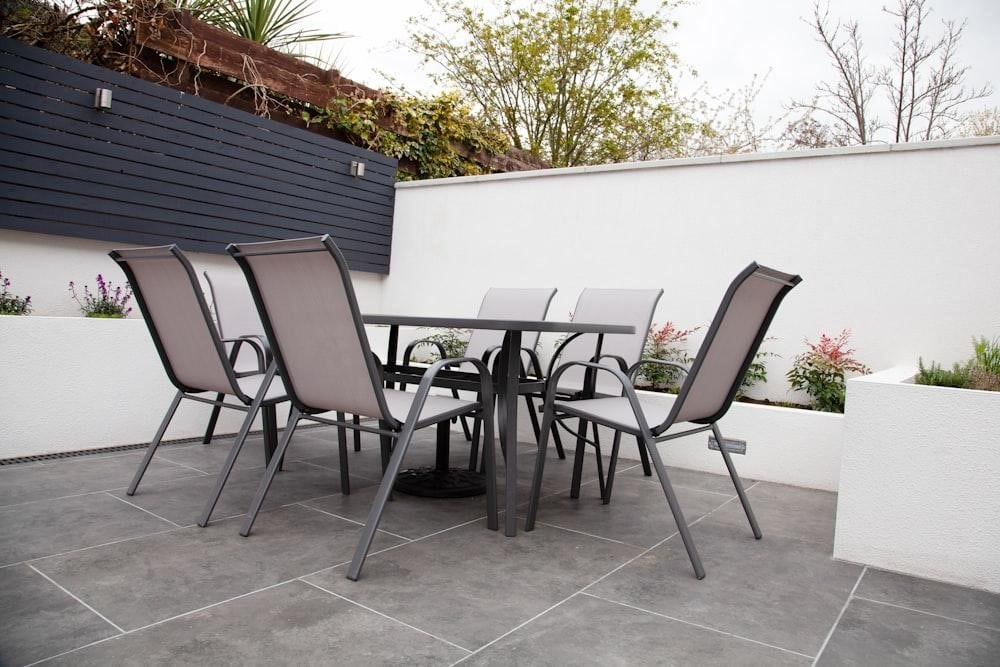
Pros:
- Water Resistance: Perfect for bathrooms and kitchens.
- Durable: Hard surface that withstands heavy use.
- Low Maintenance: Easy to clean and resists stains.
Cons:
- Comfort: Hard and cold underfoot, which can be uncomfortable.
- Installation Complexity: Requires professional installation due to difficulty in cutting and laying tiles.
Stone Flooring
If you love that sophisticated look that wood flooring tends to provide but worry about expense and maintenance, stone flooring is a tough contender. Sumptuous and durable, stone recreates the natural earthiness with authentic textures and colors. Although it wears easily with moisture and needs sealing, installation is easy by techniques best suitable for various settings, making it a viable option for those handy with home improvements.
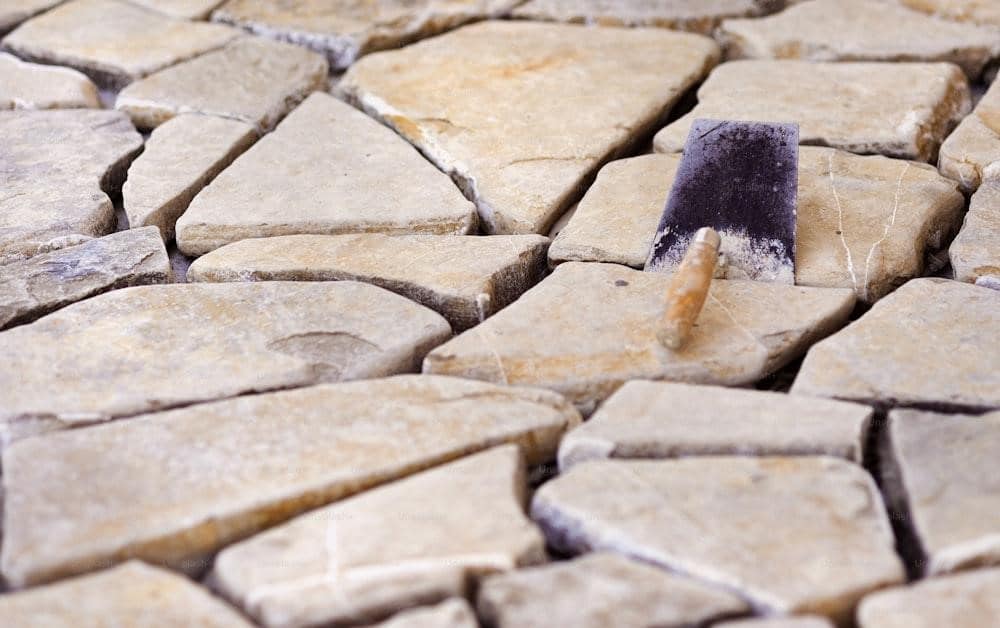
While typically more costly than wood, stone and tile flooring still registers as a cost-effective option. This is mainly due to the durability the product boasts, coupled with little maintenance. Best at holding up to moisture, brands to consider include Stone Impressions and Emser Tile, among others; they are extremely well-suited for the bathroom, kitchen, and entryways. Stone flooring is a mixture of natural cut stones that are bound into tiles, from marble with subtle shading to slate with vivid colors, offering a broad spectrum of aesthetic options to match different interior designs.
Pros:
- Aesthetic Appeal: Provides a high-end, natural look.
- Durability: Extremely durable, often lasting the lifetime of the home.
- Unique Textures: Each piece is unique, adding to the overall luxury.
Cons:
- Cost: One of the most expensive flooring options.
- Maintenance: Regular sealing and care are needed to prevent stains.
- Cold and Hard: Similar to tile floors, stone can be uncomfortable underfoot.
Bamboo Flooring
Bamboo flooring type is an ecologically sustainable choice, said to resemble traditional hardwood, done with very unique aesthetics. It is done using the rapidly renewable plant bamboo, which grows to maturity within 3-5 years, therefore making it a highly sustainable option. Besides being friendly to the environment, bamboo is also highly durable and resistant to moisture and wear. This makes it a befitting flooring option for almost every part of the house, be it in the living rooms or the most used places. Besides, the creation of a warm and inviting ambiance in your house with bamboo flooring will make your house even more sophisticated with the unique grain patterns that are so close, yet so far from the normal hardwoods.
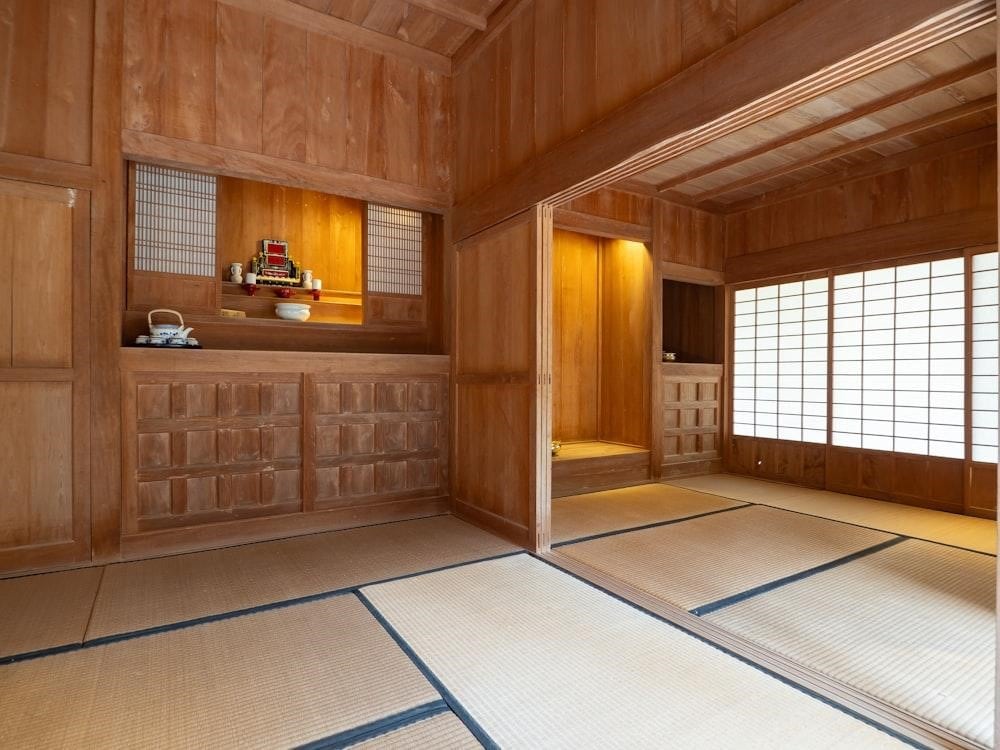
Pros:
- Sustainability: Made from a fast-growing, renewable resource.
- Strength: Comparable to traditional hardwoods in durability.
- Aesthetic Diversity: Available in various grains and finishes.
Cons:
- Climate Sensitivity: Can expand or contract with changes in humidity.
- Scratch Visibility: More prone to visible scratches compared to harder woods.
Cork Flooring
Cork is naturally soft, comforting, and earth-friendly. The elasticity of the bark of cork trees gives a slight bouncing effect to it that feels, among other things good underfoot. While its popularity in kitchens is relatively new, cork has been around for years. Cork also offers superior sound absorption, is generally more eco-friendly, and can be less expensive than regular hardwood flooring—a third less, in fact—making it a budget-friendly choice following vinyl or even some linoleum flooring.
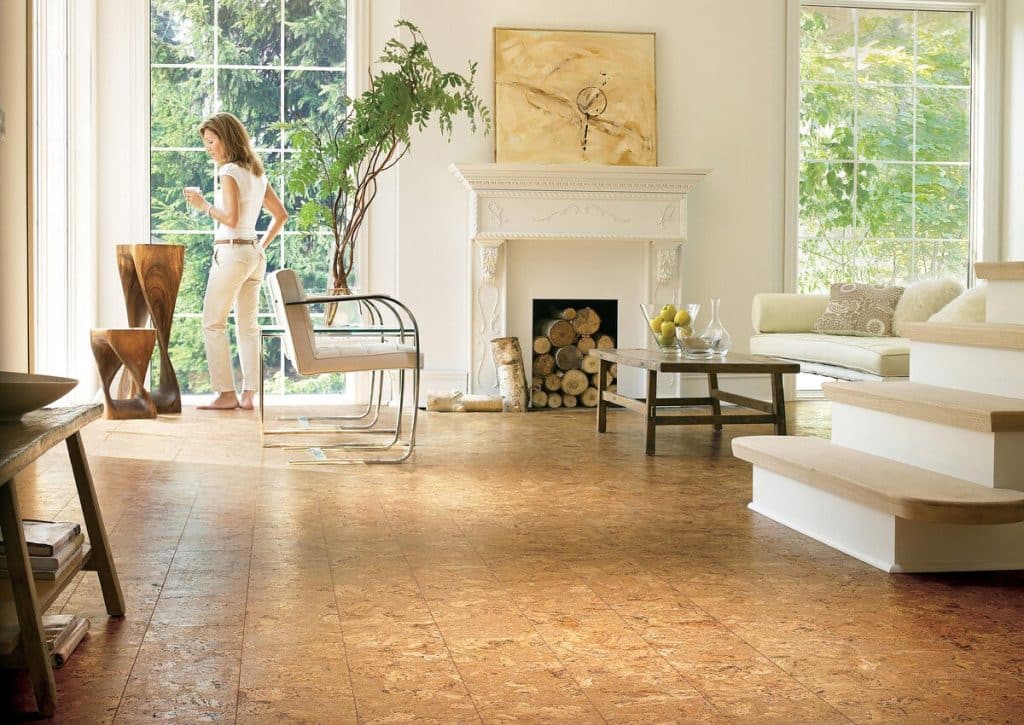
Available in a surprisingly wide pallet of colors, cork is also produced in tiles and planks. Unlike the cork used in bulletin boards, modern cork flooring is treated with Loba AT, a water-based finish that improves resistance to moisture and everyday wear and tear.
However, cork can be easily gouged and marked in deep scratches, making it less advisable for homes with active pets or the high-traffic entryway. However, it makes great flooring in children’s rooms and playrooms due to its softness underfoot and its ability to insulate from sound and thermal waves. While it generally is very durable, the cork flooring tends to fade when exposed to the sun. It’s very cautious in where to be laid and uses rugs or any other coverings in places where a lot of direct sunlight is received.
Pros:
- Comfort: Soft underfoot, reducing fatigue and noise.
- Eco-Friendly: Harvested from the bark of cork oak trees without harming the tree.
- Thermal Insulation: Naturally insulating properties help regulate indoor temperatures.
Cons:
- Durability Issues: Can be punctured by sharp objects and heavy furniture.
- Fading: Susceptible to fading with exposure to direct sunlight.
- Water Sensitivity: Needs to be sealed to protect against moisture.
Carpet
It is loved for its softness, warmth, and comfort. Being fibrous, it cushions one walking or standing on it, therefore making it enjoyable. It is common to place a carpet in the bedroom or living room due to the comfortable feel it brings, thus making it the best in places where people spend most of their time on their feet or children lying on the floor. It also has better sound insulation, is available in different designs and textures, and, in most cases, is less costly in comparison to hardwood flooring.
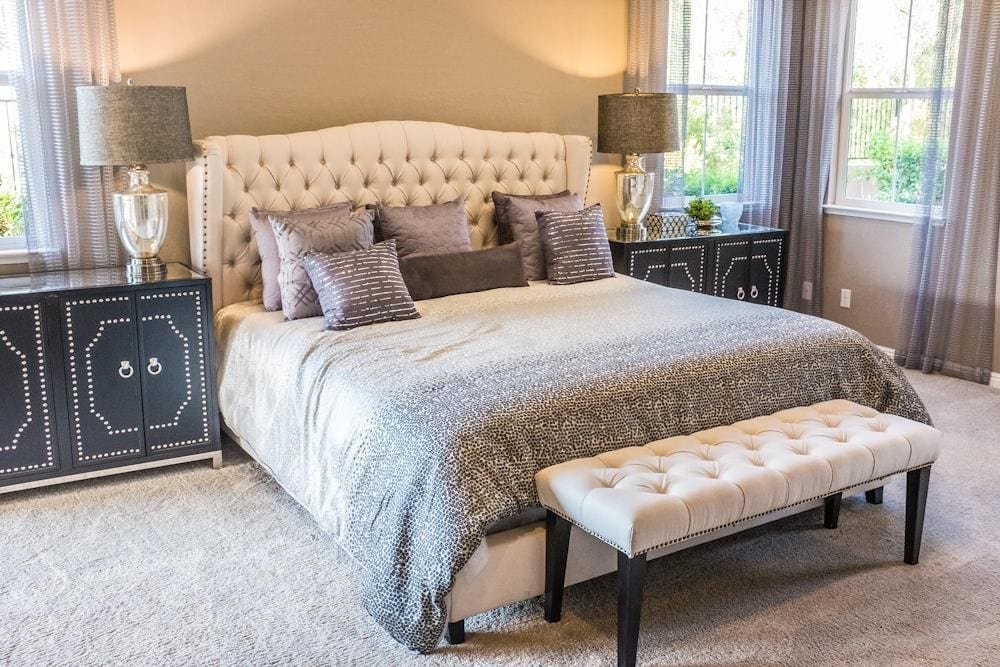
Carpets come in just about every spectrum of color and style, from the very plush velvets to the rugged Berbers. Where a hard surface is flat and rigid, the carpet, with its cushiony underfoot feel, also adds another level of insulation against the cold and noise. It makes your indoor environment much quieter and warmer. All the carpets are treated with the latest technology formulations for resistance to stains, bringing durability and ease of care.
They can stain, however, and wear in high-traffic areas, so they may not be the best choice for an entryway or a dining room with a lot of activity from pets or small children. This makes them good choices not only for children’s rooms but also for family living areas, providing a soft landing and helping to muffle sound. Still, even if the carpet is tough, it will eventually show wear and even fade from too much exposure to the sun, so placing its use and throwing rugs or curtains will help to lessen the sunlight exposure.
Pros:
- Comfort: Soft and warm, providing a comfortable walking surface.
- Acoustic Benefits: Excellent for noise reduction across rooms.
- Variety: Wide range of colors, textures, and materials to match any decor.
Cons:
- Maintenance: Regular vacuuming and professional cleaning are required.
- Allergens: Can harbor allergens and dust mites, potentially affecting indoor air quality.
- Wear and Tear: Shows wear patterns and may stain more easily than hard surfaces.
New and Alternative Flooring Types
Innovation in the flooring industry has persisted over the years with the advancement in technology and increased environmental consciousness. Therefore, new or alternative kinds of flooring, besides durable and stylish, will be sustainable and offer health benefits. Here are some of the emerging, less conventional flooring materials and choices:
- Rubber Flooring: Durable and very comfortable underfoot, rubber flooring is moving out of commercial spaces and gyms and into the residential field. Rubber flooring is sought after for reducing noise and sound and is water-resistant, making it ideal for use in basements, playrooms, and gyms.
- Recycled glass tiles are a great selection for in-house, eco-friendly use. These are some of the most beautiful products made by post-consumer glass manufacturers that come up with a reflective finish, which is perfect for kitchens and bathrooms.
- Concrete Flooring: Once considered fit only for the industrial look or minimalist interior design, polished concrete has now found its way into the hearts and styles of many contemporary lovers. In so many ways, you can stain, polish, and treat it that you get a look that is totally modern. Apart from that, it’s also very hard-wearing, and it’s easy to maintain; there is a seamless surface without needing any joins.
- Terrazzo: Back in style after a mid-century lapse, this flooring material consists of either marble or glass chips in a concrete base, later polished to a high sheen. Very durable, allowing for unlimited custom color and material mixture options.
- Reclaimed Wood: For the rustic enthusiast, or for someone who just needs to have that vintage look, reclaimed wood flooring offers one eco-friendly solution through the use of old woods from barns, mills, and other structures. Each piece carries its own unique history and charm.
- Linoleum: Making a return for good reason—linoleum is made of linseed oil, cork dust, and wood flour, so it’s environmentally friendly. Today’s linoleum comes in many different colors and patterns and is biodegradable. Leather Flooring: Leather flooring has warmth and even an element of surprise when the underfoot texture is luxuriant. These are generally made from recycled leather material and should be ideally applied in low-traffic, dry areas like bedrooms, studies, etc., because they are more delicate.
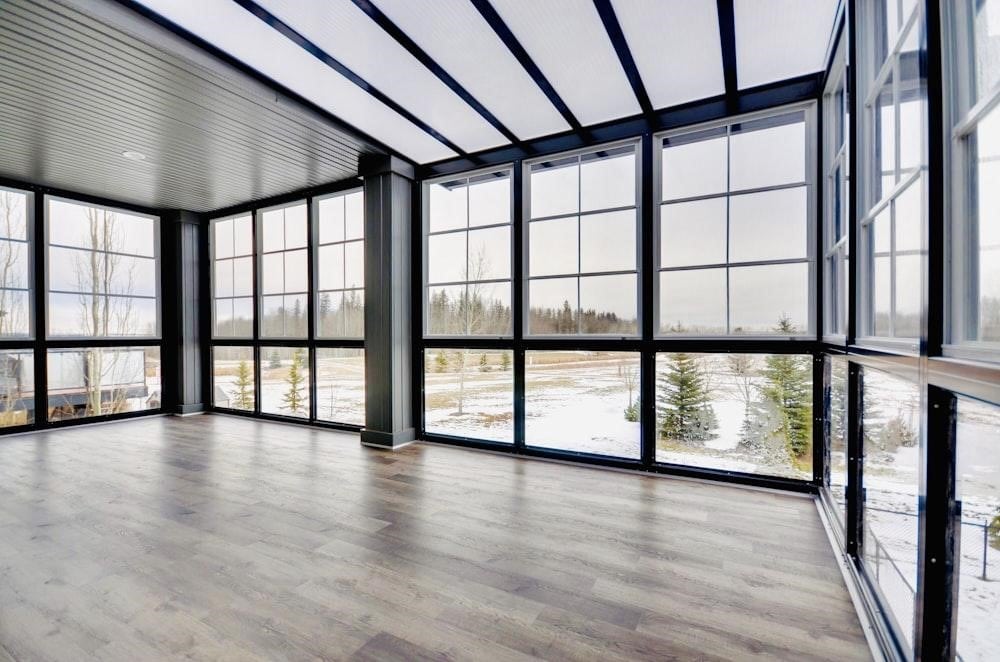
Conclusion
Choosing the right type of flooring for your home makeover is mostly about balancing your aesthetic needs against practical considerations. Each sort of flooring has its pluses and minuses. The best flooring will depend on what is needed, what can be afforded, and what kind of living habits occur. Discuss your options with a flooring specialist to ensure that your selection looks great and stands the test of time.










